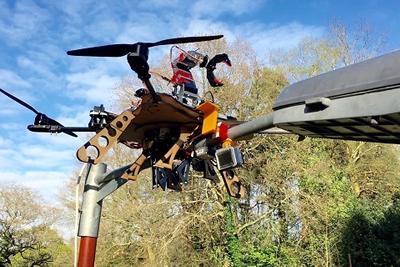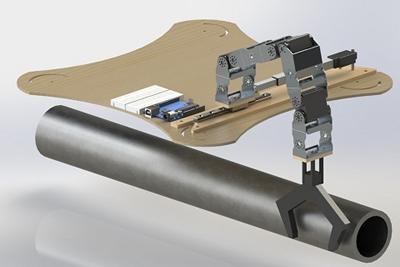University of Southampton wins a positive impact award for Robots for Resilient Infrastructure

Robots for Resilient Infrastructure, an international robotics challenge event, was held at the University of Leeds, 27-28 June 2017.
The challenge allowed participants to explore the possible future uses of robots in the creation, inspection, repair and maintenance of critical infrastructure. The University of Leeds hosted the two-day event to bring academics, industry, policy makers and stakeholders together to explore future use of robots. The event was supported by the Engineering and Physical Sciences Council (EPSRC), and saw entries from robotics researchers from around the world wishing to demonstrate their robotic technologies to delegates. Entries were judged by a panel of leading academics and industrialists on the basis of innovation, potential for impact, and style; and prizes were awarded for the best.

The University of Southampton was awarded Runner Up Prize in the Greatest Potential for Positive Impact category with their automatic perching UAV, which can also perform as a surveillance camera installation on street lamp posts. The prize money, worth £600, was sponsored by Kier Utilities.
Their perching UAV provides an efficient, safe and cost-effective means for installing and removing sensors on and off street lamps, to allow them to be used as temporary security sensors to combat various anti-social behaviour offences. It can also be deployed with alternative sensors for disaster response to collect and measure chemical, biological, radiological and nuclear (CBRN) data.

The platform’s autonomous perching was realized by integration of an Infra-Red (IR) tracking sensor and a laser rangefinder which tracks an IR emitter pre-installed on the lamppost. The IR tracking sensor measures the horizontal offset of the vehicle relative to the IR emitter, while the laser rangefinder is used to measure the distance from the vehicle to the IR emitter. Both measurements are fused to provide feedback command to guide the platform to land on the lamppost with ±10 centimetre accuracy.
Additionally, a four degree of freedom (DoF) robotic arm was installed on the platform to perform autonomous sensor (un-)installation. The arm is composed of both jointed and Cartesian configurations and consists of a three-servo jointed arm as well as a linear actuator to enable a lateral motion for the (un-)installation of the payload. The robotic arm was custom made to have minimal mass while still having sufficient strength for the task. It is controlled by an Arduino Uno and utilises IR ranger for the detection of the payload prior to un-installation. The final system has a mass of 745 g, can manipulate a payload of up to 500 g and was manufactured for less than £300.
Notes for editors
Autonomous Systems members:
Dr Stephen Prior (Principle Investigator, Main Supervisor) | Dr Chang Liu (Secondary Supervisor, Competition Team Leader) | Leyton Paget (MEng Student in charge of Precision Landing on Lamppost and Drone Platform) | Peter Turner (MEng Student in charge of Robotic Arm for camera Installation on Lamppost) | Dr Mehmet Ali Erbil (Providing Lamppost Perching Mechanism as the outcome from his PhD)